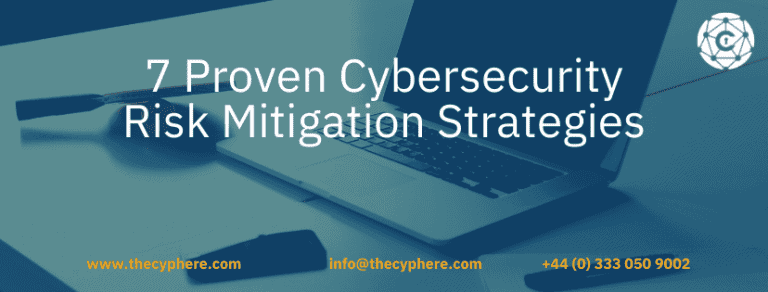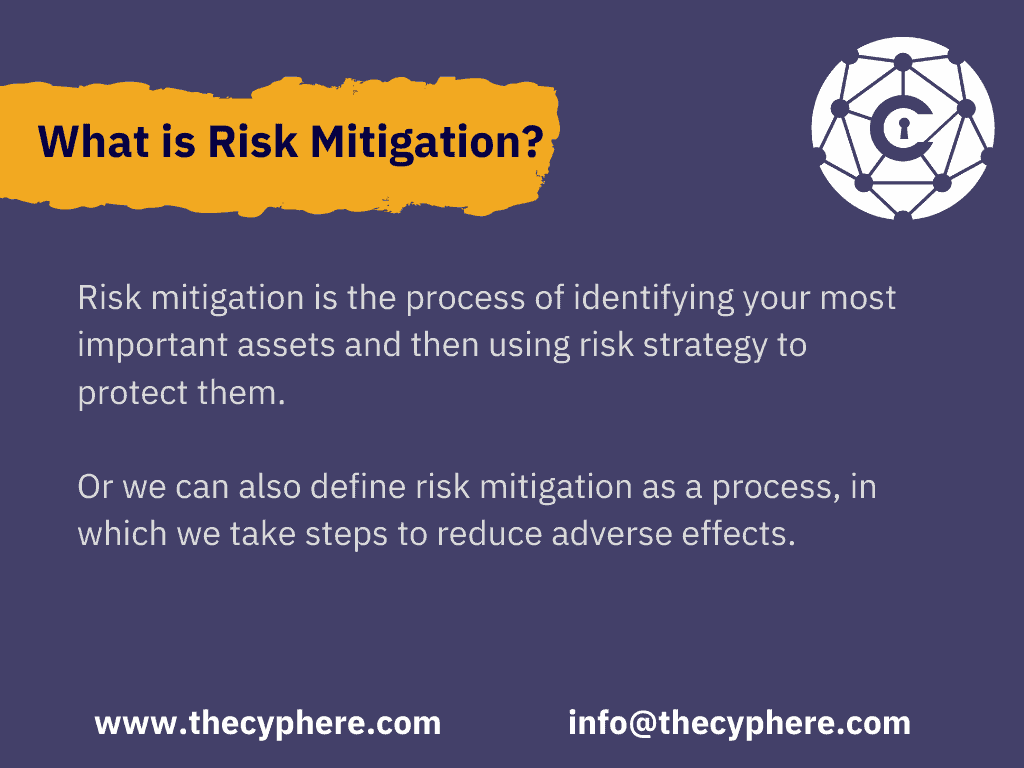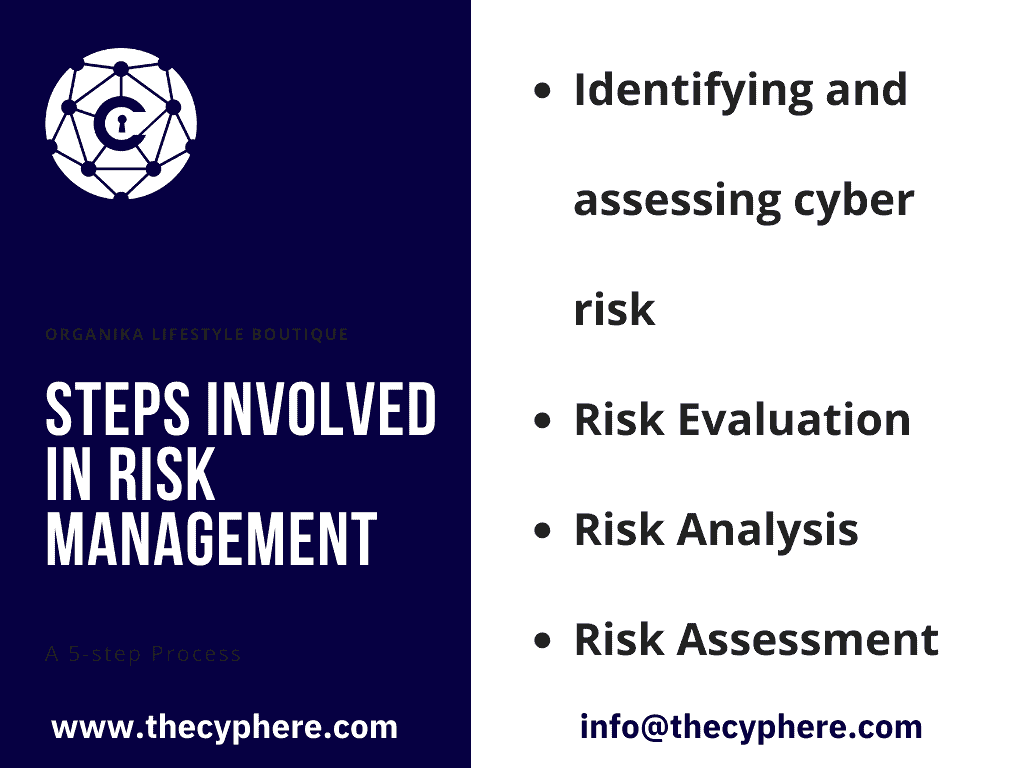
Cybersecurity is one of the essential tasks for any business. It’s not just protecting your company’s data and information from external threats but also ensuring that it remains robust to internal ones. All three, i.e. people, processes and technology, are your greatest asset. If they are not embedded and managed throughout the organisation, you can expect that they will inadvertently put your sensitive data at risk. This blog article explores security risk mitigation and core strategies to achieve the task.
Your foremost task should be to develop an overall risk mitigation strategy for managing cyber risks. To identify vulnerabilities and strengths, you should consider all aspects of the organisation – IT systems, processes, and personnel. This will help with identifying weaknesses that cybercriminals may exploit.
Therefore, you should have an enterprise-wide view of the cybersecurity risks for your organisation and its sub-units. This is the only way to ensure that all areas are covered and that a proper risk assessment occurs.
Risk remediation is one of the most difficult phases of a risk management programme. This is based on the facts and experience of our penetration testing and cyber security services delivery for the last 10+ years.
We will show you the strategies to reduce or mitigate such IT security risks and discuss the importance of risk mitigation planning and risk management in the first place.
What is risk mitigation in cyber security?
The definition of risk mitigation is to reduce the severity or probability of a loss from an undesirable event.
Or we can also define risk mitigation as a process in which we take steps to reduce adverse effects.
Risk mitigation identifies your most important assets and then uses a risk strategy to protect them. Your organisation needs to determine its risk tolerance, so you can create a mitigation plan to minimise those risks. Risk tolerance can be high, medium, or low. A risk mitigation strategy will protect your organisation’s assets from internal and external threats and help save money in other ways.
Risk mitigation is a problem-solving tool that helps you make a risk mitigation plan for the unexpected to be dealt with more smoothly. A risk mitigation plan is an opportunity for you to reduce and eliminate risk. You cannot prevent a catastrophe from happening at all times, but you can always lessen its impact. It means having a good risk mitigation strategy to help you if the worst should happen. Risk mitigation strategies include a combination of these options, i.e. accept, avoid, control or transfer risk.
Risk transfer involves moving the risk to another third party or entity. Risk transfer can be outsourced, moved to an insurance agency, or given to a new entity, as happens when leasing property. Risk transfer doesn’t always result in lower costs.

The risk mitigation process starts by identifying, evaluating and analysing the risks based on available and researched data. Risk evaluation and analysis is a process that can be used to assess what IT security risks exist in the business and then measure them against a set of predetermined criteria.
To view a concise version of this article, we invite you to watch our video on the same topic.
What is cyber risk remediation?
Cyber risk remediation is identifying, assessing, and mitigating risks associated with exposure to cyber threats. Cyber risk remediation programs typically include technical, organisational, and procedural controls designed to reduce the probability and/or impact of cyber incidents.
Risk Management
Risk management is identifying and mitigating potential risks early as possible, so they don’t jeopardise a project. With the increasing number of cyberattacks, every organisation needs to understand their risks and prepare a risk management plan to reduce them. Security teams should implement mitigating strategies in your execution plan, or risk analyses are pointless. Risk mitigation implementation is the process of executing risk mitigation actions.

For cyber risk management, consider the following:
- Identification – It is essential to identify all potential risks and their root causes in risk management.
- Evaluate and analyse risk interactions – This step includes evaluating how each of these risks might interact to find common causes that can be taken care of through a risk mitigation strategy.
- Assessment, Prioritisation, and Allocation – Once this has been done for every significant risk factor, there needs to be an assessment and prioritisation, so resources are allotted accordingly before any actionable decision-making processes of risk management go into effect.
The risk impact or liability is shared among departments, partners or companies.
Identifying and assessing cyber risk
Cyberattacks are on the rise, and organisations of all sizes struggle to cope with them.
The problem is that most companies don’t know how to tell if a cyberattack is targeting them in advance. And even when an attack does happen, it’s too late to do anything about it except try to clean up after the fact.
Cyber risk is a type of business and operational risk unique in its pervasiveness. It can happen anywhere, anytime, to anyone with an internet connection.
In some cases, cyber risks are new or not as well understood as other types of threats, such as physical damages from natural disasters – but the impacts can be long lasting. This can only be reduced by proper risk mitigation in advance.
Identification of entity’s vulnerabilities
The first step of cyber risk assessment is identifying things (in your business) that attract cybercriminals the most.
Ask yourself these questions while assessing risks faced by your organisation,
- How is information collected and stored?
- What information is collected?
- Who has access to the stored data?
- How our entity secures its systems, networks, email, etc.
- How much of my information is stored in the cloud?
- What are our backup strategies, and how effective they are?
- Is there a disaster recovery plan for data centre failures?
Identification and external and internal risks
Cybercrime needs to be taken seriously and should not only be thought about in terms of external threats. The ultimate purpose of risk identification and analysis is to prepare for risk mitigation which includes risk reduction of the likelihood that a risk event will occur and/or risk reduction of the effect of a risk event if the latter does occur.
Internal events are just as important; for example, human error or misconduct can lead to severe consequences like fraud schemes. Before risk mitigation, Identification of external and internal risks is mandatory.
To start with, look into the different types of cybercrime:
- Phishing scams are carried out when hackers send emails or texts that ask for personal information.
- Ransomware typically arrives as an email attachment that opens malware onto your computer or software.
- Supply chain attacks cause disruptions to the targetted company.
- Keystroke logging programs record passwords by monitoring inputted data from keyboards without authorisation—and these represent only the tip of the iceberg! Not sure what you’re up against?
It’s always good practice to stay informed on the latest trends by researching cybersecurity tactics, techniques and procedures so you’re ready when an event occurs.
Gauge your company’s resilience
It’s time to hire an external security specialist and see what they can do. Companies often mistake hiring an outside security specialist just for penetration testing, but why not go one step further? Instead of passively waiting around while someone else tries their luck on your systems, you should be proactive about defending yourself through active hacking from an outsider as well – all so that ultimately nothing will come up in those dreaded pen tests.
Calculate the impacts of any Cyberattack
In a business world that is constantly evolving, data breaches are inevitable. You need to make sure you have your plan in case something goes wrong so that the cost of a breach doesn’t cripple your company.
There’s no shortage of resources online and elsewhere for creating such plans. And if not, there are specialists around who can help guide you through the process of calculating your cost expectations from cyberattacks. This will help you a lot in risk mitigation. Risk limitation employs some risk acceptance and some risk avoidance, and risk avoidance means not performing that activity that causes the risk.
However, it’s important to note that risk avoidance is usually the most expensive of all risk mitigation options for your business.
Risk Evaluation
Risk evaluation is also an essential part of risk mitigation and management because it helps you decide what risks are worth taking some time and money for before they happen.
Risk evaluation determines the significance of risks through a comparative process to have an accurate assessment. Cyberthreats are growing in number and sophistication – with no end in sight. 32% of large businesses have admitted a significant risk of using an unsupported version of the Windows Operating System (likely to be Windows 10 and Windows 7).
Your risk evaluation should account for the following;
- The importance to your business
- How much control do you have over it
- Potential losses if something goes wrong with this activity or project and any benefits that might arise from taking a particular course of action when faced with possible problems such as these.
Risk Analysis
Your business’s risk analysis process will help you judge how much money, effort or resources are required for risk mitigation of the losses incurred from risk or how much the company can afford to lose.
Cybersecurity is a complex, ever-changing field that can be overwhelming for small and medium businesses.
The following are some of the criteria that can be considered by an organisation when performing a cyber security analysis:
- The probability of a specific incident happening to other incidents
- The consequences, if it does happen, include potential damage and how much time would need to be spent repairing cracks or restoring lost services
Risk Assessment
Cyber security risk assessments help you identify the threats to your business from cybercrime, data breaches or malware. The process identifies risks that an attacker could exploit with malicious intent. It also highlights vulnerabilities in your systems that may have been overlooked because of time pressure or lack of awareness. A risk acceptance strategy at the beginning is crucial for effective risk mitigation.
To perform a successful cyber security risk assessment, read our step-by-step guide.
A good risk assessment let business mitigate potentially costly data breaches. These assessments improve security controls and reduce the odds of information falling into malicious hands. The evaluation helps establish better communication across departments, establishing a more robust culture within an organisation while ensuring compliance with applicable regulatory standards such as PCI DSS, GDPR or HIPAA.
Cyber Risk Mitigation Strategies
security teams can use the following strategies in cyber risk mitigation planning and monitoring. Security risk mitigation is only one part of the equation for data privacy and security. Incident response planning is another piece of the puzzle to ensure your organisation is ready in case of an event.
Where can you locate best practices for preventing or mitigating cybersecurity threats?
- Keep your software updated
- Multi-factor authentication
- Restricted access
- Disaster Recovery plan
- Get rid of unwanted hardware and software
- Ensure signed software policies
- Hunt of intrusions

1. Keep your software updated
The software your company run on the machine is vulnerable to a cyber attack and zero-day exploits. Updates must be applied as soon as possible, or attackers will attempt to utilise zero-days or exploits against known vulnerabilities that could lead to unauthorised access, resulting in data leaks, theft, or compromise.
Protecting your company from these threats requires diligence: always apply updates once they are available; automate the process when it’s feasible so systems don’t need constant risk monitoring; use vendor-provided update services instead of accessing them directly for assurance of authenticity (these should also be automatically updated).
Implement protections against attacks before an exploit is released by patching vulnerabilities in advance, with patches released at least “N” days before release.
2. Restricted Access
businesses should take security measures to protect privileged access. Assign privileges based on risk exposure and as required for operations maintenance, including using a Privileged Access Management (PAM) solution to automate credential management and fine-grained access control. To manage privilege, these risk mitigation strategies may help your company:
- tiered administrative access or one-time passwords/tokens with procedural guidelines designed around secure resetting credentials such as Password authentication services.
- Procedures should also be in place to securely reset passwords or other types of credentials if they are compromised so high-value assets aren’t inadvertently exposed to threat actors who consistently target privileged accounts.
3. Disaster Recovery Plan
Data loss is a real possibility. It’s not just about natural disasters or cyber attacks but also human error and hardware failure.
The average cost of downtime for an organisation is $5 million per hour, with most of these costs being lost revenue.
Cybersecurity professionals must have an important risk mitigation strategy to create, review, and exercise a system recovery plan that will ensure the restoration of data as part of a comprehensive disaster recovery strategy. The risk mitigation plan must protect critical data, configurations, and logs to ensure continuity of operations due to unexpected events. For additional protection, backups should be encrypted and stored offsite offline when possible, support complete recovery and reconstitution of systems and devices, perform periodic testing, and evaluate backup plan updates as necessary to accommodate the ever-changing network environment.
4. Get rid of unwanted hardware
As every system administrator knows, you need to take inventory of your network devices and software. You should remove unwanted or unneeded hardware from the equation as much as possible by starting with a known baseline. This will allow you to establish control over operations in the future while reducing the attack surface even more so than before!
As part of the risk mitigation process, systems must be actively managed – meaning they can adapt dynamically in response to changing threat environments while scaling up and streamlining administrative tasks for optimal efficiency during operation.
5. Ensure Signed Software Policies
To make sure that your computer is secure, you should use a modern operating system that enforces signed software execution policies for scripts, executables and device drivers.
For risk mitigation, you need to maintain a list of trusted certificates to prevent and detect the injection of an illegitimate executable into privileged processes modules. In conjunction with this policy, it’s recommended that all devices have support for executing only authorised binaries from specific administrators who are identified by their digital signature on any given machine-readable media such as USB drives inserted through front panel ports on desktop computers; mobile phones can be protected using either hardware security keys or fingerprint scanners embedded within the touch screen display itself, so there’s never anything stored locally after single login operation completed successfully.
6. Hunt for Intrusions
It’s essential to take proactive steps to protect your network. Dedicated teams should be formed, continuously seeking out any evil presences or threat actors that may have access within the organisation. Passive detection mechanisms are an efficient risk mitigation strategy, such as logs. SIEM products are crucial in finding strange behaviour on a network. At the same time, hunting operations can help identify potential threats before they become an issue for you and penetration testing is necessary, so security professionals know how vulnerable their systems could potentially be if someone were enterprising enough to try hacking into them.
7. Stay away from single-factor authentication
Include multi-factor authentication in your risk mitigation plans. Organisations need to transition away from single-factor authentication, such as passwords and PINs. Passwords can be subject to poor user choices because they are easy to remember or hard to know the answer quickly. They are also susceptible to credential theft, even if it’s not on your system like many believe! You’ll never get hacked again by using a two-step verification process that includes something that you have (a security token) and something that you know (your password).
Get in touch to discuss your primary risks and security concerns or schedule a consultation call.
Shahrukh, is a passionate cyber security analyst and researcher who loves to write technical blogs on different cyber security topics. He holds a Masters degree in Information Security, an OSCP and has a strong technical skillset in offensive security.












